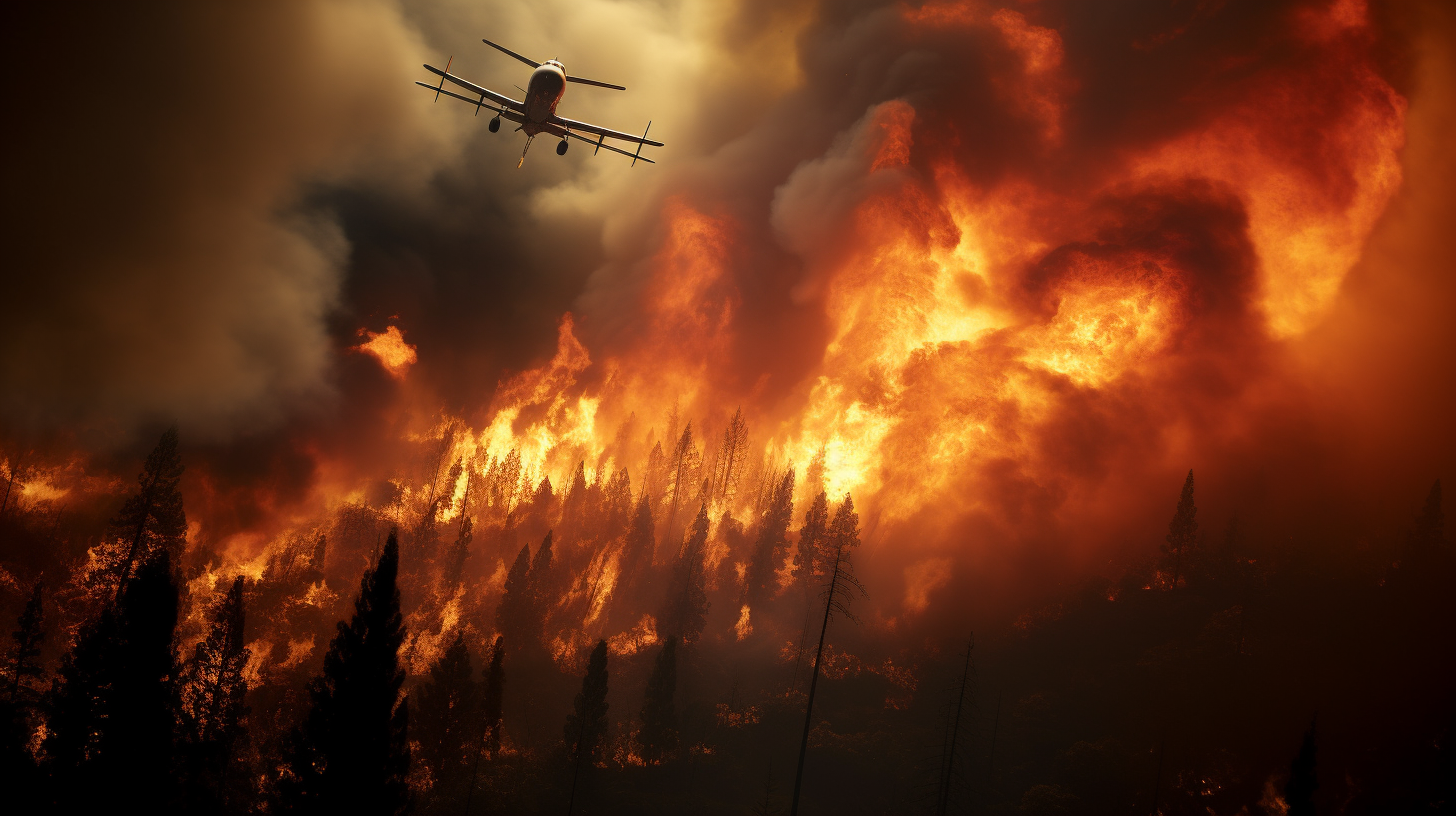In a world teetering on the brink of ecological apocalypse, a new Harbinger descends – or rather, ascends – upon our already ravaged lands. Aptly termed ‘Skyward Flames’, these aerial wildfires are the latest evolution in a long line of climate-induced infernos that bespeak our environmental misdeeds and missteps.
Not so long ago, we charted the Drought Fires, as they mercilessly consumed what remained of our parched countrysides. We gazed, hearts in throats, at the Thrones of Ashes, where fire reigned supreme over the ruins of what once teemed with life. Now, the scourge has taken to the skies, a phenomena as fascinating as it is fearsome, laying waste to the very air we breathe.
Aerial wildfires, as the name suggests, are blazes that travel through the atmosphere, aided by sinister combinations of heat, wind, and drought conditions. The embers birthed from their fiery wombs are capable of igniting new fires many miles away, in a cataclysmic butterfly effect. Witnesse describe these skyward conflagrations as ‘fire dragons’, undulating across the sky, setting the heavens ablaze.
But how did we come to this precipice? Climatologists point to a cocktail of amplified temperatures, exacerbated by an atmosphere choked with carbon emissions. Our forests, suffocated by years of pollution, have turned into tinderboxes awaiting a spark.
Witnesses to these airy armageddons share their observations with a palpable sense of doom. “It’s like the sky itself has caught fire,” says a shell-shocked survivor of a recent flurry of aerial fires. For those on the ground, the threat is not just from above. The radiant heat, even from high-altitude blazes, can scorch the earth, leaving behind an inhospitable wasteland. Fauna seen leaping for their lives seem more myth than mammal, as mythical as the phoenix yet rising only in panicked flight, not majestic rebirth.
The repercussions are multifold; the impenetrable smoke curtains, for one, can transform midday into a choking, suffocating night. The particulate matter from these lofty infernos posses a knock-on effect; exacerbating respiratory ailments, grounding flight paths, and shrouding our sunsets with a macabre beauty that belies the terror it represents.
Yet, amidst the ashes of the world we knew, humanity persists. Firefighters battle these aerial adversaries with a grim determination, employing cutting-edge technology and old-school courage in equal measure. Innovators, those artisans of hope, devise wildland fire air purifiers capable of digesting smoke like whales sweeping krill from the sea.
In confronting these Skyward Flames, we confront our own legacy. As we gaze upward at the billowing pyres, there’s a silent, collective wish that they could bear our sins skyward, burning away the remorse for what we’ve lost. But these flames are conservationists, not executioners; they conserve our memories in the most macabre of scrapbooks, each layer of ash a page in the chronicle of our decline.
To dwell upon the wonder of these Skyward Flames is to dance with a bitter irony. They represent nature’s fiery renaissance and our civilization’s possible final act. In every ember that dances upwards, riding the twisting thermals, there is a tale of beauty and destruction, a duality that captivates even as it consumes.
It is a cruel paradox that even as our world burns, it captivates with a deadly elegance. The Skyward Flames, ascending as a fiery phoenix in an irreversible gyre, remind us that while from the ground it might look like the end, from the heavens, it’s merely a tragic spectacle. a sight so terribly grand, it can almost be called art, if one could overlook the canvases it obliterates in its wake.
